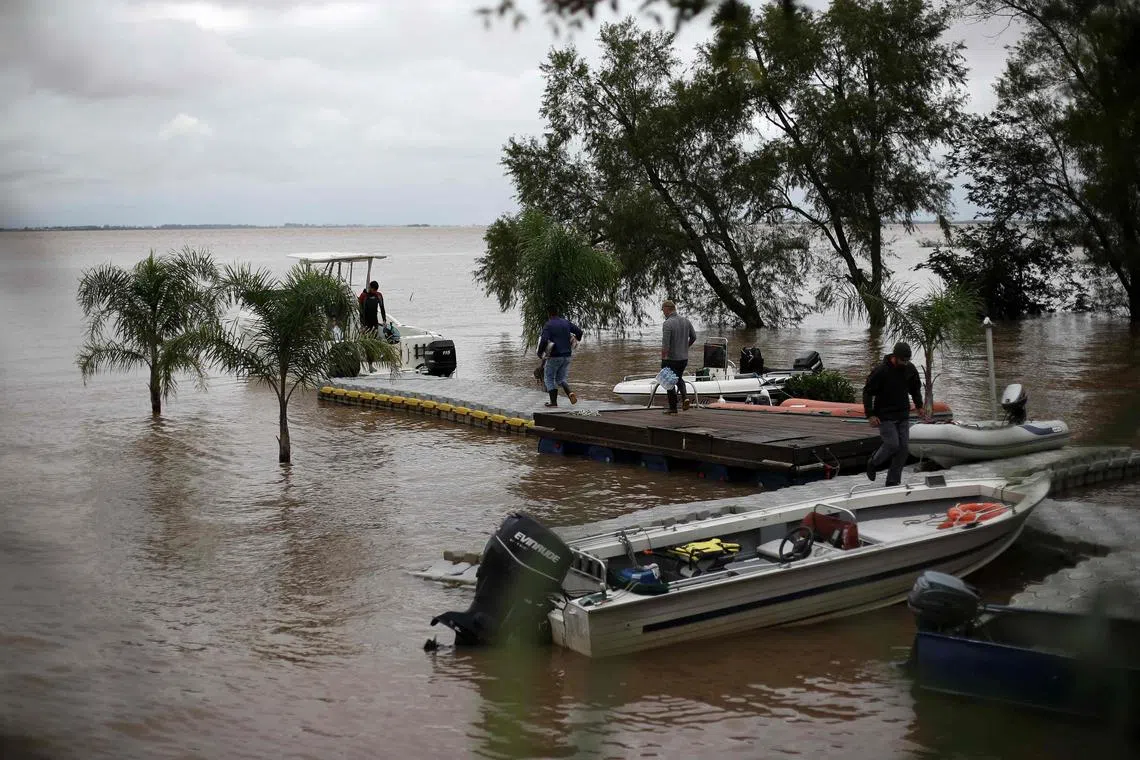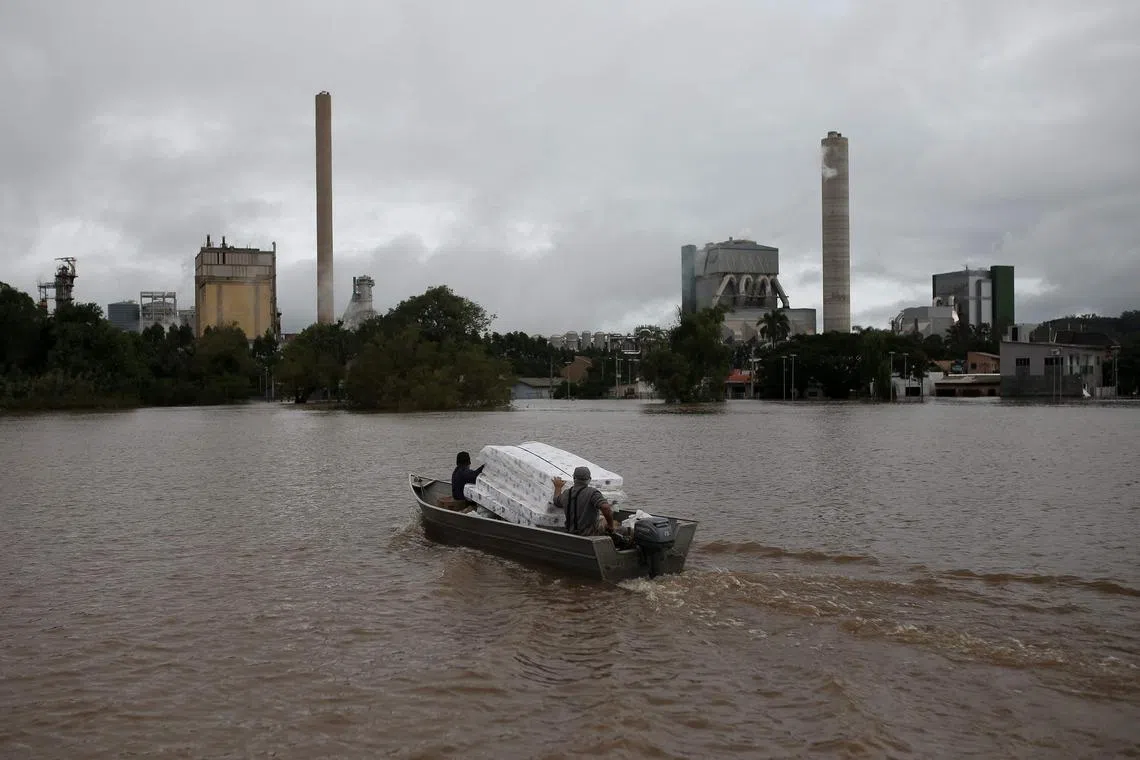Southern Brazil’s persistent flooding raises spectre of climate migration
Sign up now: Get ST's newsletters delivered to your inbox

The disaster has killed at least 147 people, with 127 still missing.
PHOTO: AFP
Follow topic:
MUCUM, BRAZIL - Devastating and ongoing flooding in southern Brazil
Two weeks after the onset of torrential rains, the Guaiba River running by state capital Porto Alegre is rising again, having passed the all-time high. In the state of Rio Grande do Sul, the streets of dozens of towns have turned into slow-moving rivers.
Just in the area around Porto Alegre, where four rivers converge to form the Guaiba River, researchers estimate nearly 3,800 sq km were flooded. That is more than the urban footprint of the Washington DC metro area, which includes 10 counties in two adjacent states.
With hundreds of thousands of families fleeing the floods, the disaster – which has killed at least 147 people, with 127 still missing – could touch off one of Brazil’s biggest cases of climate migration in recent history.
Southern Brazil’s location at the confluence of tropical and polar currents has fed periods of increasingly intense drought and rains due to climate change, according to scientists.
The record devastation in Rio Grande do Sul follows floods in the second half of 2023, leading many of the 538,000 people now displaced from their homes to consider more extreme adaptations.
For the third time in seven months, businessman Cassiano Baldasso had to remove wheelbarrows of mud from his home in Mucum, a small town 150km upriver from Porto Alegre, only to see the waters rise again. He says he has had enough.
“I have no idea where I’m going, but it will be somewhere far from the river, where our lives will not be at risk,” Mr Baldasso told Reuters as he removed another cart of mud from inside the house.
Mayor Mateus Trojan said many of Mucum’s 5,000 residents will have to relocate. His office is planning to rebuild 40 per cent of the town elsewhere.
Mr Baldasso had already saved his family in September by climbing onto the roof of their two-storey house until they were rescued by the fire brigade in the middle of the night.
During that flood, just a few blocks away, Ms Maria Marlene Venancio’s house was swept away and she lost everything. In May, the rental house she had moved into was flooded 1.5m deep. She fears it is time to leave Mucum.
“I think the town will become a river one day, and it will be difficult for us to live here. People with money are all leaving,” she said.
Governor Eduardo Leite has said initial calculations show Rio Grande do Sul will need at least 19 billion reais (S$5 billion) to rebuild from the disaster. The federal government has offered to freeze 11 billion reais of debt payments for three years.
On the streets of Mucum and other nearby towns, the slowly receding waters leave desolate scenes of furniture, clothing and appliances piled up in front of houses.
Ms Maria Ines Silverio has returned to her house, but she keeps her clothes in plastic bags for fear of the river rising again. She has a 30-year mortgage and says she cannot afford to leave.
“When we bought the house, this wasn’t a flooded area. Now it is, and the river is going to rise more and more,” she said.

Volunteers transport mattresses to be taken to Guaiba for flood victims in Porto Alegre, Rio Grande do Sul state, Brazil, on May 13, 2024.
PHOTO: AFP
Environmental experts warn there is no alternative for some towns in the state but to relocate entire neighbourhoods.
Ecologist Marcelo Dutra, a professor at Rio Grande Federal University, said: “We need to move urban infrastructure away from high-risk environments and return space to the rivers... so they no longer impact cities with such magnitude.
“We can’t oppose nature. We have to wake up to this force that is telling us we need to adapt and respect nature.” REUTERS

